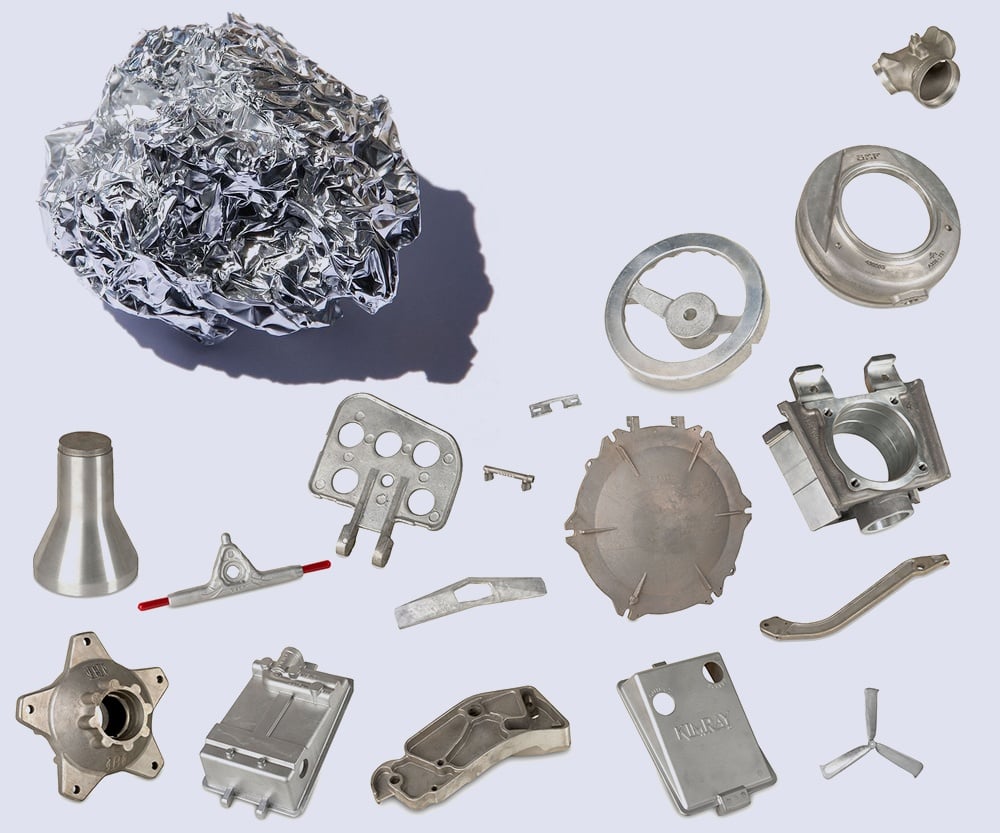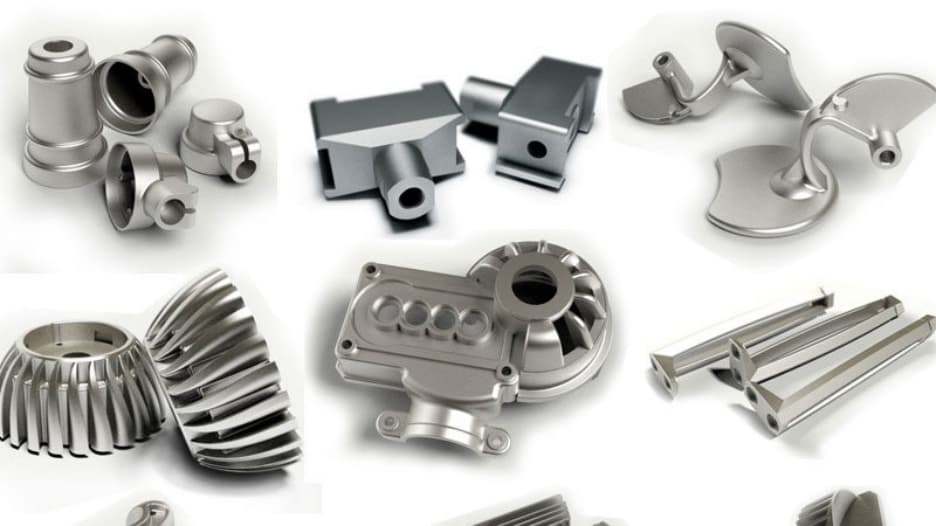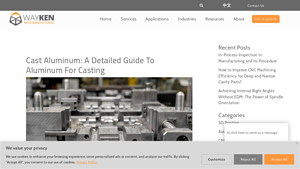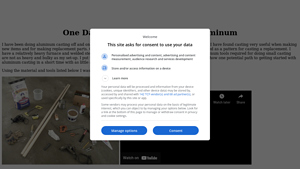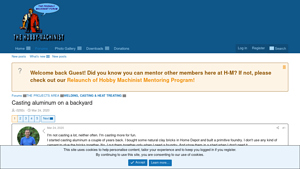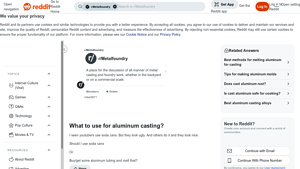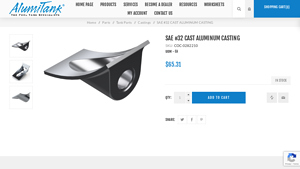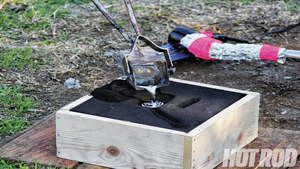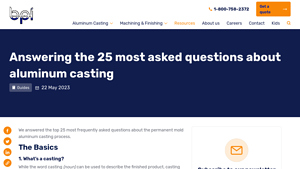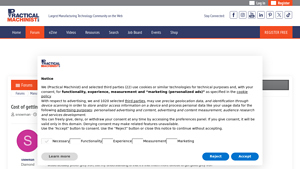Casting Aluminum Parts Guide: Type, Cost, Top List…
Introduction: Navigating the Global Market for casting aluminum parts
In the rapidly evolving global market, sourcing high-quality casting aluminum parts poses a significant challenge for international B2B buyers. From Africa to South America, the Middle East, and Europe, companies are tasked with identifying reliable suppliers who can deliver durable, lightweight components that meet specific design requirements. This guide aims to demystify the complex landscape of aluminum casting by providing an in-depth analysis of various casting processes, applications, and best practices for supplier vetting.
With insights into the differences between die casting, sand casting, and permanent mold casting, this resource equips decision-makers with the knowledge needed to select the most appropriate method for their projects. Additionally, we delve into the cost factors associated with aluminum casting and offer practical strategies for negotiating favorable terms with suppliers. By understanding the nuances of aluminum alloys and their applications across industries—from automotive to aerospace—B2B buyers can make informed purchasing decisions that enhance their competitive edge.
This comprehensive guide empowers international buyers, especially those in regions like Nigeria and Vietnam, to navigate the challenges of sourcing casting aluminum parts effectively. By leveraging the information presented, companies can ensure they partner with reputable manufacturers, ultimately driving quality and innovation in their product offerings.
Understanding casting aluminum parts Types and Variations
| Type Name | Key Distinguishing Features | Primary B2B Applications | Brief Pros & Cons for Buyers |
|---|---|---|---|
| Die Casting | High-pressure injection into molds; excellent surface finish | Automotive, aerospace, electronics | Pros: High precision, excellent mechanical properties. Cons: Higher initial costs for die creation. |
| Sand Casting | Mold made from sand; versatile for complex shapes | Machinery parts, art sculptures, prototypes | Pros: Low cost, suitable for large parts. Cons: Lower dimensional accuracy and surface finish. |
| Permanent Mold Casting | Gravity-based filling; better surface finish than sand casting | Automotive components, industrial machinery | Pros: Good dimensional accuracy, reusable molds. Cons: Limited to simpler shapes compared to die casting. |
| Investment Casting | Precision molds made from wax patterns; complex geometries | Aerospace, medical devices, jewelry | Pros: High precision, excellent surface finish. Cons: Longer lead times and higher costs. |
| Gravity Die Casting | Uses gravity to fill molds; suitable for medium production | General manufacturing, automotive parts | Pros: Cost-effective for medium runs, good surface finish. Cons: Slower than high-pressure die casting. |
What Are the Key Characteristics of Die Casting for B2B Buyers?
Die casting is a highly efficient process where molten aluminum is injected into a mold under high pressure. This method is particularly suited for mass production, offering superior dimensional accuracy and surface finish. B2B buyers in industries like automotive and aerospace favor die casting due to its ability to produce complex shapes with tight tolerances. However, the initial investment for creating the die can be significant, making it essential for buyers to evaluate production volume against costs.
Why Choose Sand Casting for Versatility in Production?
Sand casting stands out due to its flexibility in producing a wide range of part sizes and shapes. This process involves creating a mold from sand, making it ideal for prototypes and custom parts. While it offers lower costs and can accommodate larger components, the trade-off is generally lower dimensional accuracy and a rougher surface finish. B2B buyers should consider sand casting for projects where design complexity is less critical and cost-effectiveness is a priority.
How Does Permanent Mold Casting Improve Surface Quality?
Permanent mold casting employs reusable molds and utilizes gravity to fill them, resulting in better surface finishes and dimensional accuracy compared to sand casting. This method is advantageous for industries needing high-volume production of components with moderate complexity, such as automotive parts. While it provides a good balance of cost and quality, buyers should be aware that it may not be suitable for intricate designs requiring more complex mold shapes.
What Advantages Does Investment Casting Offer for Precision Parts?
Investment casting is renowned for its ability to produce parts with intricate geometries and exceptional surface finishes. This process involves creating a mold from a wax pattern, which is melted away, leaving a precise cavity for the aluminum. It is ideal for high-value applications in sectors like aerospace and medical devices. However, the process can be time-consuming and costly, making it more suitable for specialized applications where precision is paramount.
Why Consider Gravity Die Casting for Medium Production Runs?
Gravity die casting combines the advantages of die casting with a more cost-effective approach for medium production runs. This method utilizes gravity to fill molds, resulting in a good surface finish and reasonable dimensional accuracy. It is particularly beneficial for manufacturers looking for a balance between cost and quality in general manufacturing and automotive applications. Buyers should evaluate their production needs to determine if this method aligns with their operational requirements.
Key Industrial Applications of casting aluminum parts
| Industry/Sector | Specific Application of Casting Aluminum Parts | Value/Benefit for the Business | Key Sourcing Considerations for this Application |
|---|---|---|---|
| Aerospace | Aircraft Structural Components | Lightweight yet strong materials for improved fuel efficiency | Compliance with aviation standards, precision engineering, and quality certifications. |
| Automotive | Engine Components and Transmission Housings | Enhanced performance with reduced weight for better fuel economy | High-quality alloys, reliable supply chains, and adherence to safety regulations. |
| Consumer Electronics | Enclosures for Electronic Devices | Thermal management and durability in portable products | Custom designs, rapid prototyping capabilities, and corrosion resistance. |
| Construction | Architectural Facades and Structural Elements | Aesthetic appeal combined with structural integrity | Architectural compliance, surface finish requirements, and local market adaptability. |
| Energy | Components for Renewable Energy Systems (e.g., wind turbines) | Corrosion resistance and lightweight properties for efficiency | Material certifications, environmental impact assessments, and logistical considerations. |
How Are Casting Aluminum Parts Used in the Aerospace Industry?
In the aerospace sector, casting aluminum parts are integral for manufacturing structural components, such as fuselage frames and engine mounts. These parts benefit from aluminum’s lightweight nature, which contributes to fuel efficiency and overall aircraft performance. Buyers in this industry must ensure that suppliers comply with strict aviation standards and possess the necessary quality certifications. Additionally, precision engineering is crucial to meet the exact specifications required for safety and performance.
What Are the Applications of Casting Aluminum Parts in the Automotive Sector?
The automotive industry heavily relies on casting aluminum parts for engine components, transmission housings, and various structural elements. The lightweight properties of aluminum enhance vehicle performance and fuel efficiency, addressing the industry’s push for more sustainable practices. B2B buyers should prioritize sourcing high-quality aluminum alloys that meet safety regulations and ensure a reliable supply chain to maintain production schedules.
How Do Casting Aluminum Parts Benefit Consumer Electronics?
In the consumer electronics sector, casting aluminum parts are commonly used for enclosures of devices such as laptops and smartphones. These components provide excellent thermal management, ensuring devices remain cool during operation, and contribute to the overall durability of the product. Buyers should seek suppliers capable of producing custom designs and rapid prototypes while ensuring that the materials used are resistant to corrosion and wear.
What Role Do Casting Aluminum Parts Play in Construction?
Casting aluminum parts are increasingly used in construction for architectural facades and structural elements, combining aesthetic appeal with structural integrity. The lightweight nature of aluminum allows for innovative designs that can enhance the visual impact of buildings. Buyers in this sector need to consider local market regulations, architectural compliance, and specific surface finish requirements to ensure that the final products meet both functional and aesthetic expectations.
How Are Casting Aluminum Parts Utilized in the Energy Sector?
In the energy sector, particularly in renewable energy applications like wind turbines, casting aluminum parts are essential for components that require corrosion resistance and lightweight properties. These attributes enhance the efficiency and longevity of energy systems. B2B buyers should focus on sourcing materials that have the necessary certifications and conduct environmental impact assessments to align with sustainability goals while considering logistical challenges in material transport.
3 Common User Pain Points for ‘casting aluminum parts’ & Their Solutions
Scenario 1: Ensuring Consistent Quality in Cast Aluminum Parts
The Problem: B2B buyers often face challenges with the consistency and quality of cast aluminum parts. Variability in casting processes can lead to defects such as porosity, dimensional inaccuracies, and surface roughness. For instance, a manufacturing company in Nigeria may source aluminum components for automotive applications but experiences frequent rejections due to quality issues. This not only increases production costs but also affects timelines and customer satisfaction.
The Solution: To mitigate quality concerns, buyers should prioritize working with established suppliers who implement rigorous quality control measures. It’s essential to specify the casting process that best fits the application, such as high-pressure die casting for high precision or sand casting for larger, less intricate components. Additionally, conducting pre-production samples and thorough inspections can help ensure the components meet the necessary standards. Investing in suppliers that utilize advanced technologies for monitoring and controlling the casting process can significantly improve the consistency of the final products. Buyers should also consider requesting material certifications and compliance with relevant industry standards to reinforce confidence in the quality of the cast aluminum parts.
Scenario 2: Navigating Complex Design Requirements for Aluminum Casting
The Problem: Many B2B buyers encounter difficulties when their design specifications exceed the capabilities of standard casting processes. Complex geometries and tight tolerances are often challenging to achieve, especially in regions with limited access to advanced manufacturing technologies. For example, a South American electronics manufacturer may need intricate heat sinks that require precise thermal properties but finds that local suppliers cannot accommodate their design.
The Solution: To address complex design requirements, buyers should engage in early communication with potential suppliers to discuss design feasibility and casting methods. Leveraging techniques such as computer-aided design (CAD) can help in visualizing and refining designs before production. Additionally, exploring different casting methods like investment casting or 3D printing of molds can provide alternatives that accommodate intricate features. Partnering with a supplier experienced in design for manufacturability (DFM) principles can also facilitate adjustments that optimize both the design and the casting process. This proactive approach not only enhances collaboration but can lead to innovative solutions that meet both aesthetic and functional requirements.
Scenario 3: Managing Lead Times and Supply Chain Disruptions
The Problem: B2B buyers frequently grapple with long lead times and potential supply chain disruptions when sourcing cast aluminum parts. In regions like the Middle East, geopolitical factors and fluctuating market demands can exacerbate delays, leading to production halts for manufacturers relying on timely deliveries. For instance, an automotive parts manufacturer in Europe may face critical delays due to unforeseen shipping issues, jeopardizing production schedules.
The Solution: To effectively manage lead times, buyers should adopt a multi-sourcing strategy by identifying and qualifying multiple suppliers across different regions. This diversification can help mitigate risks associated with supply chain disruptions. Additionally, establishing clear communication channels and setting realistic delivery expectations with suppliers can enhance transparency. Utilizing just-in-time (JIT) inventory strategies may also reduce the need for large stockpiles and allow for more agile responses to changes in demand. Implementing advanced planning and scheduling software can provide insights into production timelines and help anticipate potential bottlenecks. By proactively managing the supply chain and fostering strong relationships with suppliers, buyers can significantly reduce lead times and enhance overall operational efficiency.
Strategic Material Selection Guide for casting aluminum parts
What Are the Key Materials for Casting Aluminum Parts?
When selecting materials for casting aluminum parts, understanding the properties and applications of various aluminum alloys is essential. Here, we analyze four common materials used in the casting process, focusing on their performance characteristics, advantages, disadvantages, and implications for international B2B buyers.
Which Aluminum Alloys Are Commonly Used in Casting?
1. A356 Aluminum Alloy
Key Properties: A356 aluminum alloy is known for its excellent corrosion resistance and good mechanical properties. It can withstand temperatures up to 180°C and has a tensile strength of approximately 241 MPa.
Pros & Cons: The alloy is durable and offers good weldability, making it suitable for applications requiring strength and light weight. However, it can be more expensive than other alloys and may require additional machining for precision parts, increasing manufacturing complexity.
Impact on Application: A356 is widely used in automotive and aerospace applications due to its favorable strength-to-weight ratio and resistance to thermal expansion.
Considerations for International Buyers: Compliance with standards such as ASTM B108 is crucial. Buyers in regions like Africa and South America should also consider local availability and pricing fluctuations.
2. A380 Aluminum Alloy
Key Properties: A380 is characterized by high fluidity, excellent corrosion resistance, and good mechanical properties, with a tensile strength around 310 MPa. It is particularly effective for intricate designs.
Pros & Cons: The primary advantage of A380 is its suitability for high-volume production due to its excellent casting characteristics. However, it can be less durable under high-stress conditions compared to other alloys, limiting its use in critical applications.
Impact on Application: This alloy is commonly used in the manufacturing of automotive components, electronic housings, and general-purpose castings.
Considerations for International Buyers: A380 is compliant with various international standards, including JIS and DIN. Buyers should ensure that suppliers can meet these standards to avoid quality issues.
3. A413 Aluminum Alloy
Key Properties: A413 offers exceptional fluidity and is known for its excellent corrosion resistance and thermal conductivity. It typically has a tensile strength of about 200 MPa.
Pros & Cons: The alloy is ideal for complex shapes and thin-walled sections, making it suitable for intricate designs. However, it may not provide the same strength as other alloys under heavy loads, which can be a limitation for some applications.
Impact on Application: A413 is frequently used in the aerospace and automotive industries, particularly for parts that require high thermal conductivity.
Considerations for International Buyers: Buyers should be aware of the alloy’s compliance with ASTM standards, especially in regions with stringent quality controls, such as Europe.
4. A535 Aluminum Alloy
Key Properties: A535 is known for its high strength and excellent corrosion resistance, with a tensile strength of around 310 MPa. It performs well in high-temperature applications.
Pros & Cons: The alloy’s durability and resistance to thermal degradation make it suitable for demanding environments. However, it can be more challenging to machine, which may lead to higher production costs.
Impact on Application: A535 is often used in marine applications and other environments where exposure to moisture is a concern.
Considerations for International Buyers: Compliance with marine standards and regulations is essential for buyers in coastal regions. Understanding local regulations will help ensure that the selected materials meet safety and performance criteria.
Summary Table of Material Selection for Casting Aluminum Parts
| Material | Typical Use Case for casting aluminum parts | Key Advantage | Key Disadvantage/Limitation | Relative Cost (Low/Med/High) |
|---|---|---|---|---|
| A356 Aluminum Alloy | Automotive and aerospace components | Excellent corrosion resistance | Higher cost and machining complexity | Medium |
| A380 Aluminum Alloy | Electronic housings and automotive parts | High fluidity for intricate designs | Less durable under high stress | Medium |
| A413 Aluminum Alloy | Aerospace and automotive components | Exceptional fluidity and conductivity | Lower strength under heavy loads | Medium |
| A535 Aluminum Alloy | Marine applications | High strength and corrosion resistance | Difficult to machine | High |
This strategic material selection guide provides valuable insights for international B2B buyers, enabling informed decisions when sourcing aluminum casting materials suitable for their specific applications.
In-depth Look: Manufacturing Processes and Quality Assurance for casting aluminum parts
What Are the Main Stages in Manufacturing Aluminum Casting Parts?
The manufacturing of aluminum casting parts involves several key stages that ensure the final products meet the required specifications and quality standards. Understanding these stages will help B2B buyers appreciate the intricacies involved in producing high-quality aluminum components.
Material Preparation: What Is Involved?
Material preparation is the foundational step in aluminum casting. This involves selecting the appropriate aluminum alloy based on the desired properties of the final product. Common alloys include A356 and A380, known for their excellent mechanical properties and corrosion resistance.
Once the alloy is selected, the aluminum is melted in a furnace, with temperatures typically exceeding 700°C. During this stage, additives may be introduced to improve fluidity and reduce porosity. Moreover, degassing agents are often used to remove hydrogen gas that can lead to defects in the cast.
Effective material preparation is crucial as it directly impacts the quality of the casting. B2B buyers should ensure their suppliers have robust material selection and preparation protocols in place.
Forming: How Is the Aluminum Molded?
The forming stage encompasses the actual casting process, where molten aluminum is poured into a prepared mold. There are several techniques employed, each suited to specific applications:
-
Die Casting: This method involves injecting molten aluminum into a steel mold under high pressure. It is ideal for high-volume production and produces parts with excellent dimensional accuracy and surface finish.
-
Sand Casting: This traditional method involves creating a mold from sand and pouring molten aluminum into it. While it is versatile and cost-effective, it typically results in lower dimensional accuracy and requires additional finishing processes.
-
Permanent Mold Casting: This technique uses metal molds and relies on gravity to fill the mold. It offers better surface quality and dimensional accuracy compared to sand casting, making it suitable for medium production runs.
Choosing the right forming technique is critical for ensuring that the casting meets the design specifications. B2B buyers should inquire about the methods used by their suppliers and their suitability for the intended application.
Assembly: Are There Additional Steps?
In many cases, aluminum casting parts may require assembly with other components. This could involve machining operations to achieve precise dimensions or additional processes such as welding or riveting to join multiple parts.
The assembly stage is essential for ensuring that the final product functions correctly and meets all performance requirements. Buyers should confirm that their suppliers have the necessary capabilities for assembly and post-casting modifications.
Finishing: What Techniques Enhance Quality?
The finishing stage enhances the aesthetic and functional properties of aluminum castings. Common finishing techniques include:
- Machining: Removing excess material to achieve tight tolerances and smooth surfaces.
- Coating: Applying protective coatings to enhance corrosion resistance and improve surface aesthetics.
- Anodizing: An electrochemical process that thickens the natural oxide layer on aluminum, providing improved corrosion resistance and wear properties.
These finishing techniques can significantly impact the performance and longevity of the cast parts. Buyers should assess the finishing capabilities of their suppliers to ensure they can meet specific requirements.
What Quality Assurance Measures Should B2B Buyers Expect?
Quality assurance (QA) is a critical aspect of the manufacturing process for aluminum casting parts. It ensures that products meet industry standards and customer specifications. Here are the essential components of QA that B2B buyers should consider.
Which International Standards Should Be Considered?
B2B buyers should ensure that their suppliers comply with relevant international standards such as ISO 9001, which outlines requirements for a quality management system (QMS). Compliance with ISO standards indicates a commitment to quality and continuous improvement.
Additionally, industry-specific certifications may be important, depending on the application. For example, parts used in the aerospace sector may require AS9100 certification, while those in the medical field might need ISO 13485. Buyers should verify that suppliers have the necessary certifications for their specific industry needs.
What Are the Key QC Checkpoints?
Quality control checkpoints are vital for identifying defects and ensuring that products meet specifications throughout the manufacturing process. Key checkpoints include:
- Incoming Quality Control (IQC): Assessment of raw materials and components upon receipt to ensure they meet predefined standards.
- In-Process Quality Control (IPQC): Ongoing inspections during production to monitor processes and detect any deviations from standards.
- Final Quality Control (FQC): Comprehensive inspection of finished products before shipment to verify conformance to specifications.
Implementing these checkpoints helps minimize defects and ensures that buyers receive high-quality products.
What Common Testing Methods Are Utilized?
Various testing methods are employed to evaluate the quality of aluminum castings. Common techniques include:
- Visual Inspection: A basic method to detect surface defects, such as cracks or inclusions.
- Dimensional Inspection: Using calipers or coordinate measuring machines (CMM) to ensure parts meet specified dimensions.
- Non-Destructive Testing (NDT): Techniques like ultrasonic testing or radiographic inspection are used to detect internal defects without damaging the part.
- Mechanical Testing: Assessing tensile strength, hardness, and impact resistance to ensure the material meets performance requirements.
B2B buyers should inquire about the testing methods employed by suppliers to ensure they are robust and reliable.
How Can B2B Buyers Verify Supplier Quality Control?
Verification of supplier quality control is crucial for building trust and ensuring product reliability. Here are several approaches buyers can take:
-
Supplier Audits: Conducting on-site audits to assess the supplier’s quality management practices, capabilities, and compliance with standards.
-
Quality Reports: Requesting detailed quality reports that document testing results, certifications, and compliance with international standards.
-
Third-Party Inspections: Engaging independent inspection agencies to evaluate the supplier’s manufacturing processes and product quality.
-
References and Reviews: Seeking feedback from other businesses that have previously worked with the supplier to gauge their reputation and reliability.
By implementing these verification strategies, B2B buyers can ensure they partner with suppliers that prioritize quality and adhere to industry standards.
What Are the Quality Control Nuances for International B2B Buyers?
International B2B buyers, especially those from diverse regions like Africa, South America, the Middle East, and Europe, should be aware of specific quality control nuances. These include:
- Cultural Differences: Understanding regional attitudes toward quality and compliance can influence supplier relationships.
- Logistical Challenges: Ensuring that quality standards are maintained throughout the supply chain, especially when shipping products across borders.
- Regulatory Compliance: Navigating different regulations and standards in various countries can be complex. Buyers should ensure suppliers are knowledgeable about local requirements.
By being aware of these factors, international buyers can better navigate the complexities of sourcing aluminum casting parts and establish successful partnerships with suppliers.
Practical Sourcing Guide: A Step-by-Step Checklist for ‘casting aluminum parts’
In the competitive landscape of B2B procurement, sourcing high-quality casting aluminum parts requires a strategic approach. This guide provides a step-by-step checklist designed to assist international buyers in making informed decisions while ensuring they select the right suppliers for their needs.
Step 1: Define Your Technical Specifications
Before initiating the sourcing process, it’s crucial to clearly outline your technical requirements. This includes dimensions, tolerances, material grades, and specific casting processes (e.g., die casting, sand casting, or permanent mold casting).
– Why it Matters: Precise specifications help avoid misunderstandings and ensure that the final product meets your performance and quality standards.
– What to Look For: Consider the intended application of the parts, as different processes yield varying mechanical properties and finishes.
Step 2: Research and Shortlist Potential Suppliers
Conduct thorough research to identify suppliers that specialize in aluminum casting. Utilize industry directories, trade shows, and online platforms to compile a list of candidates.
– Why it Matters: A well-researched shortlist increases your chances of finding reliable suppliers who can meet your specific needs.
– What to Look For: Focus on suppliers with a proven track record in your industry and check for certifications (e.g., ISO, AS9100) that indicate quality management standards.
Step 3: Evaluate Supplier Capabilities
Assess the technical and manufacturing capabilities of each shortlisted supplier. Request details on their casting processes, equipment, and quality control measures.
– Why it Matters: Understanding a supplier’s capabilities ensures they can produce parts that meet your specifications and quality expectations.
– What to Look For: Look for advanced technology, skilled workforce, and a robust quality assurance program that includes testing and inspection procedures.
Step 4: Request Samples and Prototypes
Before finalizing your supplier, request samples or prototypes of their aluminum castings. This allows you to evaluate the quality of their work firsthand.
– Why it Matters: Samples provide insight into the supplier’s manufacturing accuracy, surface finish, and overall quality.
– What to Look For: Assess the samples against your specifications, focusing on dimensional accuracy, surface finish, and any specific mechanical properties required.
Step 5: Verify Supplier Certifications and Compliance
Ensure that your chosen supplier complies with industry standards and regulations relevant to your sector. This may include environmental, safety, and quality standards.
– Why it Matters: Compliance with certifications ensures that the supplier adheres to best practices and can mitigate risks associated with poor quality or non-compliance.
– What to Look For: Check for relevant certifications such as ISO 9001 for quality management and environmental certifications like ISO 14001.
Step 6: Discuss Pricing and Terms
Engage in discussions regarding pricing, payment terms, and delivery schedules. It’s essential to establish clear terms that align with your budget and project timelines.
– Why it Matters: Clear financial and delivery expectations help prevent misunderstandings that could disrupt your supply chain.
– What to Look For: Evaluate pricing structures, bulk order discounts, and any additional costs for post-processing or custom finishes.
Step 7: Establish a Communication Plan
Set up a communication plan with your supplier to ensure ongoing dialogue throughout the production process. Regular updates can help address any issues promptly.
– Why it Matters: Effective communication fosters transparency and can significantly reduce the risk of errors or delays.
– What to Look For: Determine the preferred communication channels and establish a schedule for regular check-ins and updates.
By following this checklist, B2B buyers can navigate the complexities of sourcing casting aluminum parts more effectively, ensuring quality and reliability in their procurement processes.
Comprehensive Cost and Pricing Analysis for casting aluminum parts Sourcing
What Are the Key Cost Components for Sourcing Casting Aluminum Parts?
When sourcing casting aluminum parts, understanding the cost structure is crucial for B2B buyers. The primary cost components include materials, labor, manufacturing overhead, tooling, quality control (QC), logistics, and supplier margin.
-
Materials: The choice of aluminum alloy significantly impacts cost. Alloys with higher tensile strength or specific properties, such as corrosion resistance, typically command higher prices. Additionally, fluctuations in raw aluminum prices can affect overall costs.
-
Labor: Skilled labor is essential for precision casting processes, such as die casting and sand casting. The cost of labor can vary widely depending on the region and the complexity of the parts being manufactured. For example, countries with higher wage standards may see increased labor costs compared to regions with lower labor rates.
-
Manufacturing Overhead: This encompasses all indirect costs associated with production, including utilities, equipment maintenance, and facility management. Efficient manufacturing processes can help reduce overhead costs.
-
Tooling: Tooling costs can be substantial, especially for die casting, where custom molds are required. The initial investment in tooling can be offset by higher production volumes, making it important to consider the volume when evaluating tooling costs.
-
Quality Control (QC): Rigorous QC processes ensure that the final products meet specified standards. Costs associated with testing and certification can vary based on the complexity of the parts and the required certifications (e.g., ISO, ASTM).
-
Logistics: Shipping and handling costs can be significant, particularly for international transactions. Factors such as distance, shipping mode, and customs duties can influence logistics costs.
-
Margin: Suppliers typically apply a margin to cover their expenses and profit. This margin can vary based on supplier reputation, service level, and market demand.
How Do Price Influencers Affect Casting Aluminum Parts Sourcing?
Several factors influence pricing when sourcing casting aluminum parts:
-
Volume/MOQ: The minimum order quantity (MOQ) often dictates pricing. Higher volumes can lead to economies of scale, resulting in lower per-unit costs. Conversely, low MOQs may incur higher prices.
-
Specifications and Customization: Customized parts require specific designs and processes, which can drive up costs. Standardized parts tend to be cheaper due to streamlined production.
-
Materials: The choice of aluminum alloy affects pricing. More specialized alloys may have higher costs due to their unique properties and the complexity of their production.
-
Quality and Certifications: Parts that require stringent quality standards and certifications will generally be more expensive. Buyers should assess whether these additional costs align with their quality requirements.
-
Supplier Factors: Supplier reliability, experience, and reputation can significantly influence pricing. Established suppliers may charge a premium for their expertise and reliability.
-
Incoterms: The choice of Incoterms can affect total costs, as they determine who is responsible for shipping, insurance, and tariffs. Understanding these terms is essential for effective budgeting.
What Tips Can Help Buyers Negotiate Better Prices for Casting Aluminum Parts?
To navigate the complexities of sourcing casting aluminum parts, buyers can employ several strategies:
-
Negotiation: Engage in open discussions with suppliers to negotiate pricing based on volume, payment terms, and delivery schedules. Building long-term relationships can also lead to better pricing and terms.
-
Cost-Efficiency: Assess the total cost of ownership (TCO), which includes not just the purchase price but also logistics, maintenance, and disposal costs. This comprehensive view can lead to more informed sourcing decisions.
-
International Pricing Nuances: Buyers from regions like Africa, South America, the Middle East, and Europe should be aware of local market conditions, currency fluctuations, and trade regulations that could impact costs.
-
Benchmarking: Compare quotes from multiple suppliers to understand market rates. This benchmarking can provide leverage in negotiations and help identify the best value.
-
Research and Due Diligence: Conduct thorough research on potential suppliers, including their production capabilities, quality standards, and customer reviews. This due diligence can lead to better sourcing decisions and mitigate risks.
Disclaimer on Indicative Prices
It is essential for buyers to recognize that the prices for casting aluminum parts can vary significantly based on the factors outlined above. Indicative prices should be treated as general guidelines rather than definitive costs. Always seek detailed quotes tailored to specific project requirements.
Alternatives Analysis: Comparing casting aluminum parts With Other Solutions
In the realm of manufacturing, particularly in industries that demand lightweight, durable, and complex parts, aluminum casting stands out as a popular choice. However, several alternative methods also offer viable solutions for creating similar components. Understanding these alternatives helps B2B buyers make informed decisions based on performance, cost, and application suitability.
Comparison Table
| Comparison Aspect | Casting Aluminum Parts | 3D Printing (Additive Manufacturing) | CNC Machining |
|---|---|---|---|
| Performance | High strength-to-weight ratio; excellent corrosion resistance; good thermal and electrical conductivity | Varies by material; can produce complex geometries and intricate designs | High precision and excellent surface finish; material waste may be significant |
| Cost | Moderate initial setup costs; lower per-unit costs in mass production | High initial investment; cost-effective for low-volume production | High setup costs; cost increases with complexity and material type |
| Ease of Implementation | Established processes; requires specialized molds | Relatively easy setup; no need for molds but requires skilled operators | Requires skilled operators; setup time can be lengthy |
| Maintenance | Low maintenance; molds may require periodic replacement | Minimal maintenance; technology evolves rapidly | Regular maintenance required for machinery and tools |
| Best Use Case | High-volume production of parts in automotive, aerospace, and consumer goods | Prototyping and low-volume production; complex geometries | Custom parts and components where precision is critical |
In-Depth Analysis of Alternatives
3D Printing (Additive Manufacturing)
3D printing has emerged as a transformative technology in manufacturing, allowing for the creation of complex and customized parts without the need for traditional molds. It excels in prototyping and low-volume production, making it ideal for industries that require rapid iteration and design flexibility. However, the materials used in 3D printing may not always match the mechanical properties of cast aluminum, particularly in high-stress applications. Additionally, while the initial setup costs can be lower, the per-part cost may rise significantly for high-volume production, making it less favorable compared to aluminum casting for mass manufacturing.
CNC Machining
CNC (Computer Numerical Control) machining is a subtractive manufacturing process that offers high precision and the ability to work with a variety of materials, including metals and plastics. This method is particularly advantageous for producing complex parts with tight tolerances and high-quality surface finishes. However, CNC machining can generate significant material waste, and the setup costs can be substantial, especially for intricate designs. It is best suited for custom parts and scenarios where precision is paramount, rather than for mass production where aluminum casting might be more cost-effective.
Conclusion
When choosing between aluminum casting and its alternatives, B2B buyers should carefully consider the specific requirements of their projects. Factors such as the volume of production, the complexity of design, material properties needed, and budget constraints will play a critical role in the decision-making process. While aluminum casting offers a balance of performance and cost-effectiveness for high-volume production, technologies like 3D printing and CNC machining may provide valuable alternatives for specialized applications or low-volume needs. Understanding these options will empower buyers to select the most suitable manufacturing method for their unique challenges.
Essential Technical Properties and Trade Terminology for casting aluminum parts
What Are the Key Technical Properties of Casting Aluminum Parts?
When evaluating casting aluminum parts, understanding their technical properties is crucial for B2B buyers. Here are some essential specifications that influence the selection process:
1. Material Grade
Material grade refers to the specific alloy composition of the aluminum used in casting. Common grades include A356, A380, and A413. Each grade has unique mechanical properties, such as tensile strength and corrosion resistance, which dictate its suitability for various applications. For instance, A356 is known for its excellent casting characteristics and is often used in aerospace components. Buyers should select a grade that aligns with the performance requirements of their projects.
2. Tensile Strength
Tensile strength is the maximum amount of tensile (pulling) stress that a material can withstand before failure. This property is critical for applications where the parts will be subjected to mechanical loads. For example, pure aluminum has a tensile strength of about 90 MPa, while certain casting alloys can exceed 220 MPa. Understanding tensile strength helps buyers ensure that the parts can perform safely and effectively in their intended environments.
3. Dimensional Tolerance
Dimensional tolerance defines the permissible limit of variation in a part’s dimensions. It is vital for ensuring that parts fit correctly in assemblies or systems. For instance, tighter tolerances may be required in the automotive sector compared to general manufacturing. Buyers should communicate their tolerance requirements clearly to avoid costly rework or failures in assembly.
4. Porosity
Porosity refers to the presence of gas pockets or voids within a casting. High porosity can significantly weaken the integrity of a part, leading to failures under stress. Buyers must understand the casting process used, as some methods, like low-pressure casting, are more prone to porosity. Specifying acceptable porosity levels in RFQs can lead to better quality assurance.
5. Surface Finish
The surface finish of aluminum castings impacts both aesthetics and functionality. Different processes yield varying surface qualities, from rough finishes in sand casting to smooth finishes in die casting. A good surface finish may reduce the need for additional processing, saving time and costs. Buyers should assess the importance of surface finish in relation to their product requirements.
What Are Common Trade Terms in the Aluminum Casting Industry?
Familiarizing yourself with industry jargon can streamline communication and negotiations. Here are some key terms to know:
1. OEM (Original Equipment Manufacturer)
An OEM refers to a company that produces parts or equipment that may be marketed by another manufacturer. In the aluminum casting industry, understanding the OEM relationship can help buyers identify quality standards and compatibility with existing systems.
2. MOQ (Minimum Order Quantity)
MOQ is the smallest quantity of a product that a supplier is willing to sell. This term is critical for budgeting and planning purposes. Buyers should inquire about MOQs to avoid unexpected costs when sourcing aluminum castings.
3. RFQ (Request for Quotation)
An RFQ is a document sent to suppliers requesting pricing for specific products or services. A well-prepared RFQ includes details about material specifications, dimensions, and quantities, enabling suppliers to provide accurate quotes. This process is essential for cost management and vendor selection.
4. Incoterms (International Commercial Terms)
Incoterms are standardized trade terms that define the responsibilities of buyers and sellers in international transactions. Understanding Incoterms is crucial for buyers to clarify shipping, insurance, and risk management aspects. Common terms include FOB (Free On Board) and CIF (Cost Insurance and Freight).
5. Lead Time
Lead time refers to the time taken from placing an order to delivery. In the context of aluminum casting, lead times can vary significantly based on the complexity of the part and the casting process chosen. Buyers should factor in lead times when planning production schedules to avoid delays.
By understanding these technical properties and trade terminologies, B2B buyers can make informed decisions when sourcing aluminum casting parts, ensuring alignment with their project specifications and operational needs.
Navigating Market Dynamics and Sourcing Trends in the casting aluminum parts Sector
What Are the Current Market Dynamics Influencing the Casting Aluminum Parts Sector?
The global market for casting aluminum parts is witnessing robust growth driven by several key factors. The increasing demand for lightweight and durable materials across various industries, including automotive, aerospace, and consumer electronics, is a primary driver. Aluminum’s excellent strength-to-weight ratio and corrosion resistance make it an attractive option for manufacturers looking to enhance product performance while reducing weight. In emerging markets such as Africa, South America, and the Middle East, rapid industrialization and urbanization are also fueling demand, particularly in sectors such as construction and transportation.
In terms of sourcing trends, technology adoption is reshaping the landscape. The rise of Industry 4.0 has led to the integration of IoT and AI in manufacturing processes, enabling smarter production and improved quality control. International B2B buyers are increasingly leveraging digital platforms for procurement, allowing for better price comparisons and supplier evaluations. Additionally, the emphasis on localized sourcing is growing, as companies seek to reduce lead times and transportation costs while supporting regional economies.
Emerging trends also indicate a shift towards customization and rapid prototyping. Buyers are looking for suppliers who can offer flexible production capabilities, allowing for shorter lead times and tailored solutions to meet specific project requirements. As a result, suppliers that invest in advanced casting techniques and maintain agile manufacturing processes will have a competitive edge in the market.
How Is Sustainability Reshaping the Sourcing of Casting Aluminum Parts?
Sustainability has become a cornerstone of modern manufacturing, significantly influencing the sourcing of casting aluminum parts. The environmental impact of aluminum production, particularly in terms of energy consumption and emissions, has prompted buyers to seek suppliers who prioritize eco-friendly practices. The use of recycled aluminum in casting not only reduces the carbon footprint but also meets the growing demand for sustainable materials.
Ethical sourcing is equally important, with buyers increasingly scrutinizing the supply chain for compliance with environmental and labor standards. Companies are now more likely to favor suppliers with transparent operations and certifications that demonstrate commitment to sustainability, such as ISO 14001 for environmental management or LEED certification for green building materials. These certifications serve as assurance for buyers that their sourcing decisions contribute positively to the environment and society.
Moreover, innovations in casting techniques, such as the development of low-energy processes and the use of renewable energy sources, are gaining traction. Suppliers that adopt such practices not only enhance their marketability but also align with the values of environmentally conscious buyers, creating a competitive advantage in the global market.
What Is the Evolution of the Casting Aluminum Parts Industry?
The casting aluminum parts industry has evolved significantly over the decades, transitioning from traditional methods to highly sophisticated processes. Initially, aluminum casting was labor-intensive, relying on simple sand casting techniques. However, the introduction of advanced technologies like die casting and permanent mold casting has revolutionized production capabilities, enabling manufacturers to produce complex and high-precision components more efficiently.
The post-World War II era marked a pivotal point in the industry, as aluminum became increasingly recognized for its advantageous properties, leading to widespread adoption in various sectors. Innovations in alloy formulations have also enhanced the mechanical properties of cast aluminum, allowing for greater application versatility.
Today, the focus is on sustainability and smart manufacturing, with industry leaders embracing digital transformation and eco-friendly practices. As the market continues to grow, the combination of advanced technology and a commitment to sustainability will shape the future of aluminum casting, making it a vital component of modern manufacturing.
Frequently Asked Questions (FAQs) for B2B Buyers of casting aluminum parts
-
How do I choose the right aluminum casting process for my project?
Choosing the right aluminum casting process depends on factors such as design complexity, production volume, and the desired properties of the final part. For intricate designs, die casting is often preferred due to its precision and ability to produce complex shapes. If you require larger parts or lower volumes, sand casting may be a suitable option, although it typically results in lower dimensional accuracy. Permanent mold casting is ideal for projects that need a balance between quality and cost, offering better surface finish and dimensional accuracy. Always consult with your supplier to align the process with your specific requirements. -
What is the best aluminum alloy for casting applications?
The best aluminum alloy for casting applications varies based on the intended use of the part. Common casting alloys include A356 and A380, which offer excellent mechanical properties and corrosion resistance. A356 is widely used for applications requiring good weldability and strength, while A380 is preferred for its superior fluidity and surface finish, making it ideal for complex shapes. Always discuss your application needs with suppliers to select the most suitable alloy that balances performance, cost, and manufacturability. -
What minimum order quantities (MOQs) should I expect when sourcing aluminum casting parts?
Minimum order quantities for aluminum casting parts can vary significantly based on the supplier and the complexity of the parts. Generally, MOQs can range from a few hundred to several thousand units, particularly for die-cast components. For sand casting, you may find more flexibility with lower MOQs. It’s crucial to communicate your needs clearly with potential suppliers to find a suitable arrangement. Smaller manufacturers may be more willing to accommodate lower MOQs, especially for new partnerships. -
What payment terms are commonly offered by suppliers for aluminum casting parts?
Payment terms for sourcing aluminum casting parts often depend on the supplier’s policies and the nature of your agreement. Standard practices may include a deposit upfront (usually 30-50% of the total order value) with the balance due upon delivery or prior to shipping. Some suppliers may offer credit terms for established businesses. It’s essential to negotiate terms that work for both parties and ensure clarity on payment schedules to maintain a smooth transaction process. -
How do I ensure quality assurance for my aluminum casting parts?
To ensure quality assurance for aluminum casting parts, it’s vital to establish clear specifications and standards at the outset of your order. Request detailed documentation of the supplier’s quality control processes, including material certifications and inspection reports. Consider implementing in-process inspections or third-party quality audits to verify compliance with your requirements. Additionally, developing a long-term relationship with suppliers who demonstrate consistent quality can further enhance assurance in your sourcing strategy. -
What are the logistics considerations when importing aluminum casting parts?
When importing aluminum casting parts, logistics considerations include shipping methods, lead times, and customs regulations. Determine the most efficient shipping method based on your timeline and budget, whether by air or sea. Understand the import tariffs and documentation required by your country’s customs authority to avoid unexpected delays. Collaborating with a logistics partner experienced in international trade can help streamline the process and ensure compliance with all regulations. -
How can I vet potential suppliers for aluminum casting parts?
Vetting suppliers for aluminum casting parts involves several steps. Start by researching their industry reputation, customer reviews, and case studies. Request references from previous clients and assess their production capabilities, including technology and equipment. Ensure the supplier adheres to international quality standards such as ISO certifications. Conducting site visits, if feasible, can provide insights into their operations and quality control practices. Establishing clear communication and responsiveness during initial interactions can also indicate their reliability. -
What customization options are available for aluminum casting parts?
Customization options for aluminum casting parts are extensive and can include variations in size, shape, and surface finishes. Many suppliers offer tailored solutions to meet specific design requirements, including machining, surface treatment, and color finishing. Discuss your project needs with potential suppliers to explore available options, including alloy selection, casting methods, and post-processing capabilities. Customization often enhances the part’s functionality and aesthetic appeal, making it crucial to align your specifications with the supplier’s offerings.
Important Disclaimer & Terms of Use
⚠️ Important Disclaimer
The information provided in this guide, including content regarding manufacturers, technical specifications, and market analysis, is for informational and educational purposes only. It does not constitute professional procurement advice, financial advice, or legal advice.
While we have made every effort to ensure the accuracy and timeliness of the information, we are not responsible for any errors, omissions, or outdated information. Market conditions, company details, and technical standards are subject to change.
B2B buyers must conduct their own independent and thorough due diligence before making any purchasing decisions. This includes contacting suppliers directly, verifying certifications, requesting samples, and seeking professional consultation. The risk of relying on any information in this guide is borne solely by the reader.
Top 9 Casting Aluminum Parts Manufacturers & Suppliers List
1. Wayken – Cast Aluminum Solutions
Domain: waykenrm.com
Registered: 2013 (12 years)
Introduction: Cast aluminum is a lightweight part made from aluminum and/or other metals using various casting processes. Key details include: 1. **Properties**: Lighter than cast iron, better dimensional tolerance, higher heat capacity, develops an external aluminum oxide coating for corrosion resistance. 2. **Comparison with Cast Iron**: Lighter, better dimensional tolerance, more precise, higher thermal resi…
2. Scorchworks – One Day Foundry
Domain: scorchworks.com
Registered: 2013 (12 years)
Introduction: One Day Foundry – For Casting Aluminum\n\nKey Product Details:\n- Purpose: Aluminum casting for creating new items and replacement parts.\n- Setup Time: Can cast an aluminum part in less than one day.\n- Recommended Raw Materials: \n – Two (2) eight foot lengths of 2×2 lumber\n – Fire clay (Hawthorn-50 recommended)\n – Fine sand\n – Charcoal\n – Charcoal lighter fluid\n – Nails (8D finish na…
3. Hobby Machinist – Clay Bricks & Crucibles
Domain: hobby-machinist.com
Registered: 2010 (15 years)
Introduction: Natural clay bricks, clay-grafite crucible, charcoal briquettes, propane torch, aluminum sources (cast aluminum car wheels, not suitable: soda cans, aluminum chips, pistons, heatsinks).
4. Reddit – Aluminum Casting Insights
Domain: reddit.com
Registered: 2005 (20 years)
Introduction: 1. **Soda Cans**: Commonly used for aluminum casting, but results can vary in appearance. They are extruded, which is acceptable for non-machined castings. However, they may leave residue in the crucible due to coatings and drinks residue.
2. **Aluminum Tubing**: Suggested as a better alternative to soda cans for cleaner results.
3. **Scrap Automotive Castings**: A356 cast aluminum is recommende…
5. AlumiTank – SAE #32 Cast Aluminum Casting
Domain: alumitank.com
Registered: 1999 (26 years)
Introduction: {“product_name”: “SAE #32 CAST ALUMINUM CASTING”, “SKU”: “COC-0282210”, “unit_of_measurement”: “EA”, “price”: “$65.31”, “availability”: “In stock”}
6. HotRod – Crucible Furnace Components
Domain: hotrod.com
Registered: 1998 (27 years)
Introduction: Crucible furnace components: 12-inch terra-cotta pot, galvanized hardware cloth, plastic planter, 90-degree sink-drain fitting, 60-pound bag of concrete. Casting materials: 5 gallons of casting sand from Alcast, brass belt buckle as pattern. Tools: $7 window screen for sifting sand, two-by-four for compacting sand, long-handled tongs for skimming slag, forked tool for lifting crucible. Safety gear…
7. Batesville Products – A356 Aluminum Casting
Domain: batesvilleproducts.com
Registered: 1998 (27 years)
Introduction: Batesville Products specializes in aluminum casting, particularly using the A356 aluminum alloy, which is known for its castability, strength, weight, and corrosion resistance. They offer permanent mold casting, which is a gravity-fed process using reusable steel molds, ideal for moderate volume production runs (500-20,000 pieces per year). The company also provides engineering and design assistan…
8. Practical Machinist – Custom Aluminum Parts
Domain: practicalmachinist.com
Registered: 2000 (25 years)
Introduction: Small aluminum parts, approximately the size of a baseball or softball, requiring no cores but a double-sided pattern board. Preference for grey iron, but aluminum is acceptable. Quantity needed is around 50 to 100 parts at a time. Cost expectations range from $5/lb to $50/lb, with tooling costs being a significant consideration. Potential casting methods discussed include sand casting, lost wax, …
9. Cloudy Nights – Sand Casting Aluminum Projects
Domain: cloudynights.com
Registered: 2000 (25 years)
Introduction: Tom Stock is interested in sand casting aluminum for projects like 6″ setting circles. He plans to use 3D printed parts as patterns for the casting process. He intends to create a foundry using a 5-gallon steel paint bucket, sand, and fire clay, and is looking for an affordable source for fire clay. He has machining capabilities and a small lathe for further processing the cast parts.
Strategic Sourcing Conclusion and Outlook for casting aluminum parts
What Are the Key Takeaways for International Buyers of Casting Aluminum Parts?
In the competitive landscape of aluminum casting, strategic sourcing is essential for optimizing quality and cost-effectiveness. Understanding the diverse casting processes—such as die casting, sand casting, and permanent mold casting—allows buyers to choose the method that best aligns with their product requirements. Each process offers unique advantages, including dimensional accuracy, surface finish, and overall strength, making it crucial to match the right technique to your project specifications.
How Can You Enhance Your Sourcing Strategy for Aluminum Castings?
Buyers should prioritize partnerships with suppliers who demonstrate robust quality control measures and a commitment to innovation. This approach not only ensures superior product quality but also fosters long-term collaboration that can adapt to changing market demands. Additionally, leveraging local suppliers in regions such as Africa, South America, the Middle East, and Europe can enhance supply chain resilience and reduce lead times.
What Does the Future Hold for the Aluminum Casting Industry?
As global manufacturing trends continue to evolve, the demand for lightweight, durable components will only grow. By actively engaging with reliable suppliers and exploring new technologies, international buyers can position themselves for success in this dynamic market. Embrace the opportunity to optimize your sourcing strategy today, ensuring that your business remains at the forefront of the aluminum casting industry.
